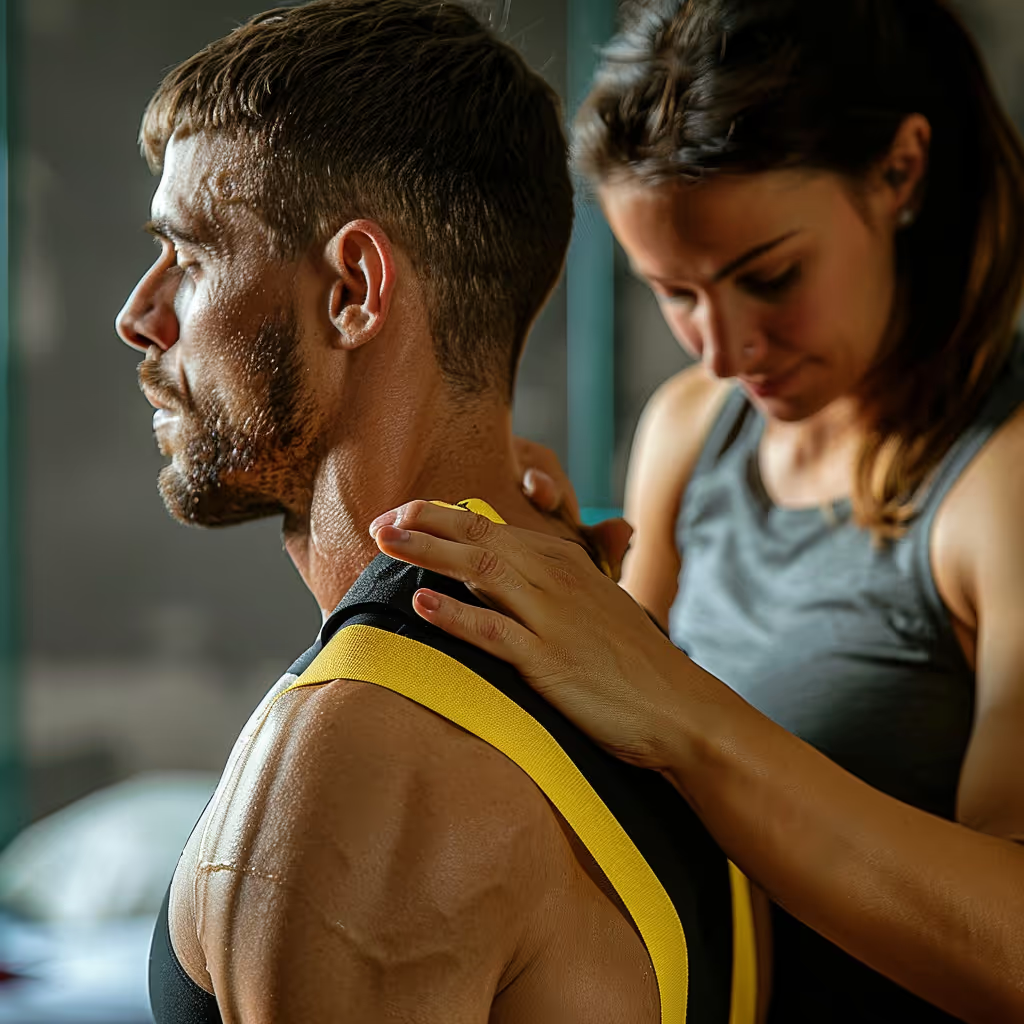Vulvo-vaginal pain
Vulvovaginal pain refers to pain in the vulva and vagina. They are said to be primary if they appear with the first insertion of a tampon or attempted penetration, or if they have always been present, and secondary if they appear after an absence of pain for several months or years. In addition, if the pain has an identifiable trigger (e.g. touch, a thought), it is said to be provoked; otherwise, it is said to be spontaneous.
What is vulvovaginal pain?
Vulvovaginal pain refers to pain in the vulva and vagina.
They are said to be primary if they appear with the first insertion of a tampon or attempted penetration, or if they have always been present, and secondary if they appear after an absence of pain for several months or years.
In addition, if the pain has an identifiable trigger (e.g. touch, a thought), it is said to be provoked; otherwise, it is said to be spontaneous.
Vulvodynia is pain in the vulva that has been present for at least three months and for which no other pathology has been identified. It can be generalized, i.e. spread over the entire vulvar region, or localized, i.e. associated with a more specific part of the vulva. For example, vestibulodynia is pain in the vestibule, i.e. the entrance to the vagina, and clitoridynia is pain in the clitoris.
Vaginismus is characterized by a painful spasm of the pelvic floor muscles, making vaginal penetration difficult or impossible.
Dyspareunia is a general term for pain during intercourse.
We understand this problem and deal with it frequently.
What causes vulvovaginal pain?
Although the cause of vulvovaginal pain can sometimes be difficult to identify, the following factors could be involved:
- Genetics;
- Hormonal changes (e.g. pregnancy, menopause, hormonal contraception, etc.);
- Another underlying painful medical condition (e.g. endometriosis, irritable bowel syndrome, fibromyalgia, etc.);
- A dermatological condition (e.g. lichen sclerosus, herpetic lesion, etc.);
- An inflammatory or infectious condition (e.g. vaginal and/or urinary tract infection, sexually transmitted infection);
- Psychological factors (e.g. stress, abuse, anxiety, etc.);
- Treatment for urogynecological cancer (e.g. radiotherapy, chemotherapy);
- Surgery on the abdomen or perineum;
- Muscular tension.
What are the symptoms of vulvovaginal pain?
Pain can take many forms: burning, itching, stabbing, heating, tearing or rubbing. Pain can be provoked, i.e. triggered by contact (e.g. penetration, rubbing of underwear) or spontaneous, i.e. appearing without any identifiable trigger.
How to diagnose vulvovaginal pain
Diagnosis is made through a subjective and physical examination in the clinic. There are also medical tests that can be prescribed by a doctor.
How can physiotherapy help vulvovaginal pain?
Diagnosis is made by subjective and physical examination in a clinic. There are also medical tests that can be prescribed by a doctor for the presence of a vaginal/urinary infection or a sexually transmitted infection.
How physiotherapy can help vulvovaginal pain
Your pelvic floor rehabilitation physiotherapist will first conduct a thorough assessment (e.g., lifestyle habits, posture, breathing, contraction/relaxation of pelvic floor muscles, etc.) to determine the cause(s) of the pain.
Based on the assessment results, your physiotherapist will:
- Mobilize the muscles and soft tissues in the abdomen and pelvic floor;
- Provide you with specific exercises to do at home to address the cause of the problem;
- Teach you how to properly manage your daily activities and hobbies to optimize healing;
- Provide advice on lifestyle habits, posture, and movements.
- Refer you, if necessary, to a doctor or other healthcare professional (e.g. psychotherapist).
When to seek physiotherapy for vulvovaginal pain
You should consult a physiotherapist if you have one or more of the symptoms described above or if your doctor has ruled out any other causes that may be responsible for your symptoms.
You do not need to see a doctor before consulting a physiotherapist. If your condition requires you to see a doctor, your physiotherapist will be able to tell you.
What to do at home for vulvovaginal pain
- Practice a stress management activity (e.g. mindfulness meditation, yoga, walking, other pleasant activity);
- Perform a deep abdominal breathing exercise: inhale slowly, allowing the belly to expand and the pelvic floor to relax, then exhale slowly, allowing the belly and pelvic floor to return to their original position. Breathe in this way for 3 to 5 minutes;
If the pain is present during sexual relations, you could :
- Experiment with different types and brands of lubricants;
- Change sexual positions and explore other forms of intimacy that don't involve penetration.
- Apply a warm or cold compress according to your tolerance and preference.
To learn more...
You can view the podcast "Talk to me about health" produced by one of our physiotherapists, Alexis Gougeon.
Episode #23 discusses perineal and pelvic rehabilitation: .
Find the episode on YouTube :
Click below to listen to episodes on podcast platforms:

https://open.spotify.com/episode/4K8MhluZYTYDzmFNn2dDAt?si=a7a8e4a1a64f4cbd
(4).png)
Videos in this category
Other conditions
Hip osteoarthritis is a normal wear and tear of the hip joint. Osteoarthritis is often described as the wearing away of cartilage between our bones. While this is true, it involves more than just cartilage. Cartilage is a tissue that acts like a cushion between the surfaces of our bones, allowing our joints to glide smoothly and move with ease.
It is a normal wear and tear of the knee joint. Osteoarthritis is often described as the wearing away of cartilage between our bones. While this is true, it involves more than just cartilage. Cartilage is a tissue that acts like a cushion between the surfaces of our bones, allowing our joints to glide smoothly and move with ease.
It is a normal wear and tear of the joints in the lower back vertebrae. Osteoarthritis is often described as the wearing away of cartilage between our vertebrae. While this is true, it involves more than just cartilage. Cartilage is a tissue that acts like a cushion between the surfaces of our vertebrae, allowing them to glide smoothly and move with ease.
A bursa is like a small, very thin, fluid-filled sac found in several joints throughout the body. This small sac acts as a cushion in the joint and lubricates structures that are exposed to more friction.
It is an inflammation of the subacromial bursa in the shoulder joint.
It is a tissue that surrounds the shoulder and allows the shoulder bone to stay in place within the joint. The capsule helps to stabilize the joint.
Cervicalgia is a general term to describe neck pain that does not have a specific cause, such as an accident or sudden movement. Cervicalgia is therefore synonymous with ''I have a pain in my neck and nothing in particular happened''.
In both injuries, there is pain felt in the neck that then radiates into the arm, or vice versa.
It is a significant stretch or tear of the muscle fibers in the groin or inner thigh muscles.
It is a significant stretch or tear of the muscle fibers in the hamstring muscles located at the back of the thigh.
This is a significant stretch or tear of the muscle fibers in the calf muscles (soleus and gastrocnemius).
This is a significant stretch or tear of the muscle fibers in the quadriceps, which is the large muscle at the front of the thigh.
Book an appointment now
We offer a triple quality guarantee: optimized time, double physiotherapy assessment, and ongoing expertise for effective care tailored to your needs.


Our clients' satisfaction is our priority.
At Physioactif, excellence defines our approach. But don't take our word for it, see what our patients are saying.
Discover our physiotherapy clinics
We have multiple locations to better serve you.
Blainville
190 Chem. du Bas-de-Sainte-Thérèse Bureau 110,
Blainville, Quebec
J7B 1A7
Laval
Montreal
St-Eustache
Vaudreuil
21 Cité-des-Jeunes Blvd. Suite 240,
Vaudreuil-Dorion, Quebec
J7V 0N3
Book an appointment now

